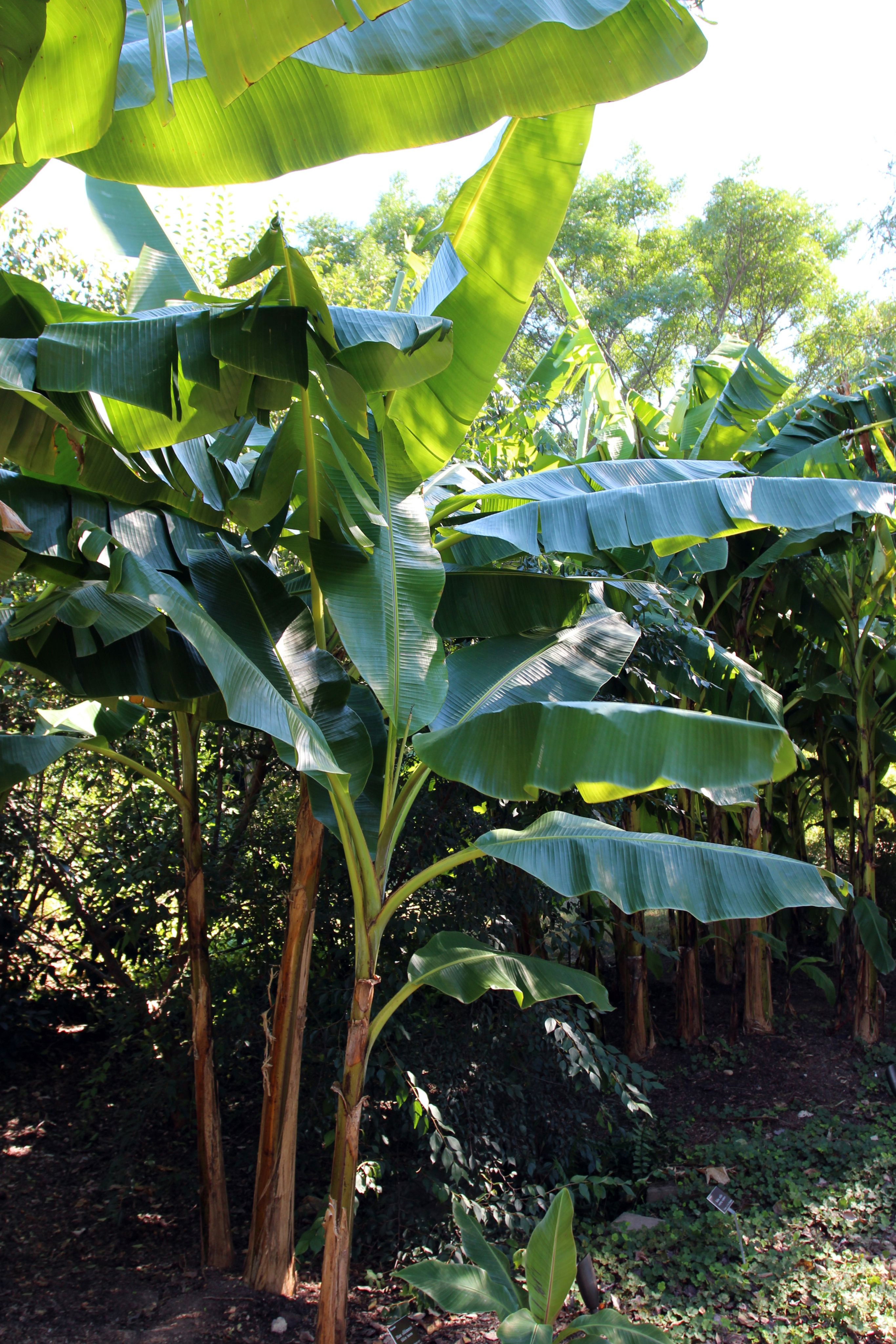Darjeeling banana
(Musa sikkimensis)

Description
Musa sikkimensis, commonly known as the Darjeeling Banana or Sikkim Banana, is a large, herbaceous plant belonging to the Musaceae family. It is native to the Himalayan region of Sikkim in northeastern India, where it grows in the forest undergrowth and along stream banks. This ornamental plant is grown for its striking appearance, including its large leaves and reddish-purple inflorescences. Taxonomy: Musa sikkimensis is a member of the Musaceae family, which also includes other well-known banana species such as Musa acuminata, Musa balbisiana, and Musa paradisiaca. The genus name, Musa, is derived from the Arabic word for banana. The specific epithet, sikkimensis, refers to the plant's native region of Sikkim in India. Description: Musa sikkimensis is a large herbaceous plant that can reach a height of up to 15 feet (4.5 meters) in cultivation. The plant typically has a single stem, which can be up to 10 inches (25 centimeters) in diameter, and produces a large crown of leaves. The leaves are large and oblong, reaching up to 10 feet (3 meters) in length and 2 feet (0.6 meters) in width. The leaves are dark green on the upper surface and pale green on the underside. The leaf margins are slightly wavy and often have a reddish-purple tint. The inflorescence of Musa sikkimensis is a large, pendulous structure that arises from the center of the crown of leaves. The inflorescence can be up to 6 feet (1.8 meters) in length and consists of numerous bracts that protect the small flowers. The flowers themselves are small and pale yellow in color. The fruit of Musa sikkimensis is an elongated, slightly curved structure that can reach up to 6 inches (15 centimeters) in length. The fruit is initially green but turns yellow when ripe. The flesh of the fruit is white and starchy, and the seeds are small and black. Cultivation: Musa sikkimensis is an ornamental plant that is often grown for its striking appearance. It is relatively easy to grow in tropical and subtropical regions, and can be grown in full sun or partial shade. The plant prefers well-drained soil that is rich in organic matter. Musa sikkimensis is also tolerant of a wide range of soil pH. Propagation of Musa sikkimensis is typically done through division of the rhizomes, although it can also be propagated from seed. When propagating from rhizomes, it is important to ensure that each division has at least one healthy shoot. Uses: Musa sikkimensis is primarily grown as an ornamental plant, and is often used as a focal point in tropical and subtropical gardens. The plant's large leaves and striking inflorescences make it a popular choice for landscaping. In addition to its ornamental uses, Musa sikkimensis is also sometimes used for food. The fruit is edible, although it is not commonly consumed due to its starchy texture and mild flavor. The fruit can be eaten raw or cooked, and is sometimes used in curries and other dishes. Conclusion: Musa sikkimensis is a large, ornamental plant that is known for its striking appearance. It is relatively easy to grow in tropical and subtropical regions, and can be propagated through division of the rhizomes or from seed. The plant is primarily used for its ornamental value, although the fruit is also edible.
Taxonomic tree:







